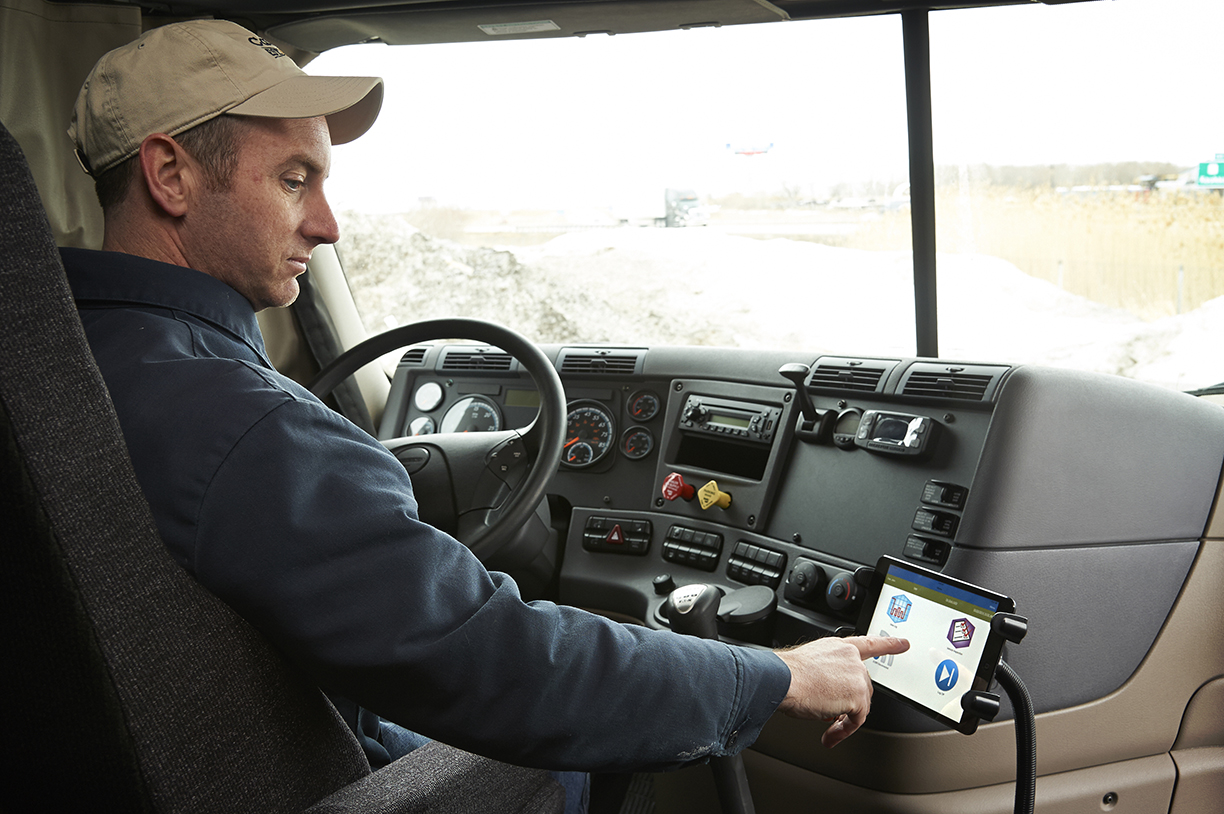Comments
- No comments found

The trucking industry has significantly changed thanks to the rise of technology.
The industry has made various advancements in recent years. ELD and telematics are two of the most important innovations that have revolutionized the industry. Their introduction has made the trucking industry more dynamic and efficient.
Read on to learn more about ELD & telematics and their role in a successful trucking business.

Telematics is a method of remotely delivering information over large distances. The term "telematics" did not even exist a decade ago but now it has become a vital part of successful fleet operations due to the advent of the internet and network connectivity. Telematics is being employed in a variety of sectors for both business and non-commercial objectives.
Telematics is synonymous with fleet telematics or vehicle GPS tracking systems in the transportation sector. The trucking industry uses fleet telematics to collect various types of data via a combination of GPS technologies, sensors, and onboard diagnostics codes. Driver behavior, real-time engine diagnostics, location of the vehicle, etc., is generally included in the collected data.
A SIM card is generally used to link the telematics device to the vehicle's onboard diagnostics port. The gathered data is sent to the central server over a wireless network via a modem. The server then reads the data and shows it via a secure website, either on a computer or a mobile app, allowing the end user, such as a fleet manager, to evaluate the data and make better-educated fleet efficiency choices.
Telematics plays a significant role in the success of the trucking business. An advanced telematics system enables an owner of a trucking business to simplify asset and driver management and operations while increasing their profit margin.
Here is how telematics plays an important role in a successful trucking business:
Having an enhanced telematics system will allow business owners to monitor the location of their vehicles, speeding, harsh driving habits, and seatbelt use. They will also receive a digital record of every aspect of their vehicles' operations, information that can help them determine where and how to make improvements to minimize accidents and increase driver safety.
Real-time driver tracking enables trucking business owners to immediately detect vehicle idling and identify drivers who idle more than they should. Advanced systems also provide statistics on vehicle usage rates for each driver, allowing owners to rank drivers based on use rate. Fuel wastage can be reduced by monitoring idle time and teaching drivers as needed. After all, fuel is one of the most expensive components of any trucking business. Reduced idling lowers fuel expenses, which in turn lowers operational costs.
With a good telematics system business owners can easily streamline communications between drivers and administrators. They can accurately estimate arrival time and improve customer satisfaction thanks to improved communication paired with accurate vehicle location and geofencing. Streamlined communication also gives business owners a competitive advantage.
A good telematics system allows business owners to automate and streamline payroll management to minimize errors. A telematics solution can also track fuel usage on a state-by-state basis which will allow business owners to generate reports on fuel tax payments broken down by geography. It is done in such a way that they can get those payments processed without the need for a ton of bookkeeping.
Trucking business owners can find the most efficient and safest routes to speed up deliveries, improve road safety, and reduce fuel expenses with telematics that provide real-time vehicle location updates. They can also find the reasons behind any delays with the help of additional features like geofencing to track performance against schedules.

ELDs are devices that are designed to record and monitor the hours of service (HOS) data of a commercial motor vehicle (CMV) driver accurately. These devices come with advanced GPS technology, automated logging capabilities, and engine connectivity. All essential data like driving time, on-duty time, off-duty time, breaks, and HOS regulations are collected by these devices.
The FMCSA introduced the ELD mandate, according to which all trucking companies and drivers have to follow various rules and regulations set by government authorities. These compliance are to ensure that the drivers follow the safety guidelines, operate within the prescribed limits, and maintain proper records of their activities.
Real-time visibility into the driver’s activities, which includes recent status, remaining driving hours, and potential violations are all provided by ELDs. This data enables drivers and fleet managers to properly plan and manage schedules, ensuring that drivers operate within legally authorized limits and take required rest periods.
What is the Role of ELDs in a Successful Trucking Business?
ELDs play a very important role in a trucking business. These devices not only improve the safety of the driver by enforcing compliance with HOS regulations but also reduces the use of paper logbooks for record keeping. This further increases the accuracy and saves time.
Here is how ELD plays an important role in a successful trucking business:
One of the most important functions of ELD is to provide accurate and tamper-proof hours of service (HOS) data. ELDs, unlike paper logs, cannot be tampered with by drivers while these devices record data in real-time. This guarantees that HOS laws are followed and that there are no violations.
ELD devices play a critical role in enhancing road safety. These gadgets assist reduce fatigue-related incidents by correctly measuring and regulating a driver's HOS. They guarantee that drivers get enough rest, lowering the risk of sleepy driving and improving overall road safety.
Trucking companies can significantly reduce the risks of compliance violations and their penalties if they use ELD devices in their vehicles. It becomes easier to demonstrate compliance during audits and inspections thanks to the accurate and verifiable data provided by ELD devices. This helps businesses avoid fines while also improving their reputation and trustworthiness in the market.
The process of managing driver logs and associated paperwork is simplified thanks to ELDs which solves the issue of manually entering data and maintaining records. This can help business owners to save time as they only need to automate the data collection and reporting. This enables businesses to concentrate on core operational operations, increasing productivity and lowering administrative expenses.
Some telematic devices are already built to be directly used but most of the devices will require the need of the proper technician and the support personnel for the proper installation and integration of the device.
The cost of the device will mostly depend on the type you are looking for. Some devices transfer data in real-time, while other ones transmit data at regular intervals. The telematics device that transfers data in real-time is built more advanced and can be costly compared to the devices that transmit data at regular intervals.
ELDs have various features such as:
Record drive time and information automatically.
The placement of the records
Internal engine control module synchronization
User manual
Prevents tampering
ELDs can cost hundreds of dollars to thousands of dollars per vehicle. There are various fees associated with obtaining an ELD solution: the device hardware, a professional installation (if necessary), and a monthly subscription charge.
Leave your comments
Post comment as a guest